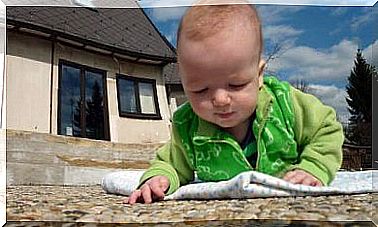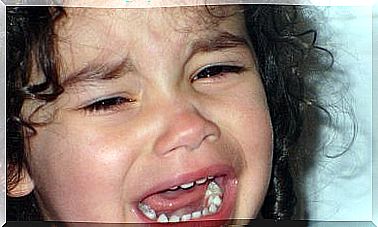The Broken Record Technique In Children

The broken record technique in children is a way to defuse negative behaviors without resorting to yelling or challenges. It can be included within ‘social skills training’ (EHS), as a method used to discourage the insistence of an interlocutor.
To put it another way, children can be very pushy, and sometimes arguments and reasoning only make the picture worse. Since shouting or punishment does not work either, the broken record technique in children is presented as an ace up their sleeve.
An example: a little girl wants to try a cookie before dinner. Any parent knows that this may take away hunger and the little one will subsequently stop eating the nutritious foods that are prepared in the kitchen.
On the other hand, the girl has already heard the argument that prohibits such a desire many times. However, it can be explained to him once again why he should not eat before dinner. Then, before each cookie order, the answer will only be: “Wait for dinner,” over and over again, like a broken record.
Some items on social skills training
The broken record is a technique used in various moments of social interaction and is useful for any age. The basis of these trainings is to consider the potential for change of the subjects and the possibility of stimulating alternative behaviors.
In general, they seek to help people overcome obstacles in situations of conflict or stress. In this way, both the broken record and a long list of techniques enable achievements such as cognitive restructuring and anxiety regulation, while promoting greater performance in problem solving.

How to apply the broken record technique in children
As we have seen in the example above, the methodology is simple. However, there is an important condition for the staging to get the ovations. Dialogue stalls when the other party ignores arguments; thus, the father or mother questioned must ignore complaints and tantrums.
All this implies a firm, determined attitude, but one that does not leave the field of love. The idea is to maintain the tone of voice throughout the episode, stoically resisting even in the face of strong onslaught from the waves of childhood frustration.
When calm arrives, the child will understand that there are insurmountable limits, to know himself and to overcome, little by little, moments of anxiety.
Likewise , the technique of the broken record in children is applied when it is necessary for them to carry out a task that they resist. “Go to the shower,” “Pick up the toys,” are simply stated commands that need no explanation.
It should be remembered that the children to whom this technique can be applied are between 5 and 7 years old, so they should already know perfectly the rules of the house.
It is also necessary to clarify that, despite the fact that this method is easy to understand, it is usually difficult to apply on days when parents feel a kind of need to meet each demand of their children. In practice, you don’t have to shake your pulse or pitch to start the broken record.
Rewards?
Just as it is not necessary to give in to the insistence of children when the determination has been made that this or that thing should not be done, positive behaviors can be reinforced.
Sometimes giving your child something they really want can show them the importance of their accomplishments. However, there are those who prefer that the reward is the mere feeling of doing the right thing.

While yelling and challenges are detrimental in the short and long term, giving prizes as a way of teaching can be as well. Children are malleable, but that does not mean that adults have the right to instill competitive and empty ways of life in them.
Doing the right thing should be a good in itself, not something that is done because “it is what it touches.” Otherwise, the ethical direction of life is lost and actions are transformed into mere interchangeable objects.
In conclusion, there is a caveat that the broken record technique in children should not be used under any circumstances or too often. The consequence of an overuse could be that it loses its effect.










